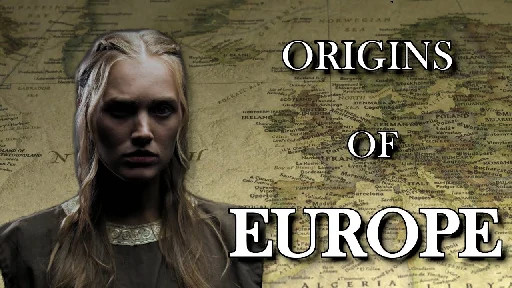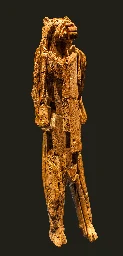Let him wait as long as he wants to wait. In detention though.
Simply look for the witch to know which is which!
Nice "What Would Nixon Do" sticker he's got on his laptop, there...
The City of Uruk and the Uruk Period
Uruk was one of the most important cities (at one time, the most important) in ancient Mesopotamia. According to the Sumerian King List, it was founded by King Enmerkar c. 4500 BCE. Uruk is best known...
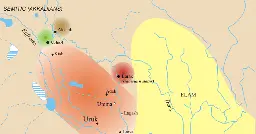
Uruk was one of the most important cities (at one time, the most important) in ancient Mesopotamia. According to the Sumerian King List, it was founded by King Enmerkar c. 4500 BCE. Uruk is best known as the birthplace of writing c. 3200 BCE as well as for its architecture and other cultural innovations.
Located in the southern region of Sumer (modern day Warka, Iraq), Uruk was known in the Aramaic language as Erech which, it is believed, gave rise to the modern name for the country of Iraq, though another likely derivation is Al-Iraq, the Arabic name for the region of Babylonia. The city of Uruk is most famous for its great king Gilgamesh and the epic tale of his quest for immortality but also for a number of firsts in the development of civilization which occurred there.
It is considered the first true city in the world, the origin of writing, the first example of architectural work in stone and the building of great stone structures, the origin of the ziggurat, and the first city to develop the cylinder seal which the ancient Mesopotamians used to designate personal property or as a signature on documents. Considering the importance the cylinder seal had for the people of the time, and that it stood for one's personal identity and reputation, Uruk could also be credited as the city which first recognized the importance of the individual in the collective community.
...
The Uruk Period
The Ubaid Period (c. 5000-4100 BCE) when the so-called Ubaid people first inhabited the region of Sumer is followed by the Uruk Period (4100-2900 BCE) during which time cities began to develop across Mesopotamia and Uruk became the most influential. The Uruk Period is divided into 8 phases from the oldest, through its prominence, and into its decline based upon the levels of the ruins excavated and the history which the artifacts found there reveal. The city was most influential between 4100-c.3000 BCE when Uruk was the largest urban center and the hub of trade and administration.
----- WorldHistory.org has such a cool website, for anyone that hasn't been there before. The timelines they show on the side are pretty great too, since you can just keep clicking and following them down whatever rabbit hole you find interesting. All of the above is copy/pasted from the linked article, it's definitely worth perusing if you ask me.
You've gotten some great answers already, with the most direct answer to the question you are probably interested in being this one from TropicalDingDong about the Southern Strategy. And then people also commented on the further context in US history of religious fundamentalists from Europe coming to the US, establishing settlements, and "spreading the good word," so to speak.
But all of that kind of begs the question - how long has politics been mixed up with religion? And from what I've read, that seems to date back nearly as far as people can trace human civilization. Namely, all the way back to ancient Mesopotamia. It seems people, from very early on, were quick to identify that politics and religion are very effective tools in exercising control over a population.
https://www.historyonthenet.com/mesopotamian-governments
By the time farming villages had grown into the great Mesopotamian cities, both priests and secular leaders were involved in Mesopotamian governments and in governing the increasingly complex society of a city. The secular leader was called the lugal, the strongman. With specialization of labor—people finding lots of different jobs and tasks to do other than farming work—it made sense to have priests fully involved in keeping the gods happy while the lugal oversaw running the city. This was a crucial step in the forming of Mesopotamian governments.
Gradually the lugal became a powerful king who dominated governance of the Mesopotamian city-state. While most of his duties as king were secular, the king had religious responsibilities as well. He, as well as the high priest, was an intermediary between the gods and the people. Kings participated in religious rituals. Common Mesopotamians considered the king as the representative of the city’s patron god, the god’s overseer on earth, so to speak.
It's also covered some on the Ancient World podcast, skip ahead to about 7:30 for the part relevant to this post. https://ancientworldpodcast.com/2012/04/episode-1-climb-stone-staircase/
It's a travesty, really, how much it leaves out! But at the same time, it's also kind of an appetizer of sorts that might draw people in. The way Sigurd kills Fafnir is especially interesting, because it has echoes in the Silmarillion and an encounter between Turin and dragon named Glaurung.
I am just reading the Caxton version of Malory's stuff now - still near the beginning of the second volume, which is to say: about halfway through. I can't help but envision the Monty Python crew as the main cast of characters, and that probably helps with getting through some of it that might otherwise seem too dry or repetitive. They take their chivalric pomp intensely seriously!
Sigurd And The Dragon: A Legendary Hero’s Quest In Norse Mythology
As a lover of mythology, few stories have captivated me quite like the legend of Sigurd and the dragon. The tale is a thrilling adventure that has stood the

As a Tolkien fan, I found myself exploring some of his writings outside of Middle-earth. One of the stories I really like is his version of the Sigurd story from the Volsung Saga, called The Legend of Sigurd and Gudrún. One mini-story within the greater one is the story of Sigurd and his fight with a dragon named Fáfnir, and that is what the link in this post is focused on. There's a lot more going on in the story than just what you are presented with in this snippet, but it's still a fun snippet to share that was written by someone that obviously enjoyed the story.
Just had a chance to open the book back up, and from the note on the text by Christopher Tolkien, corrigan is a Breton word for fairy. From the introduction by Verlyn Flieger, she expands a bit more to say:
In the Lay she represents a particular subset of this type [of Celtic seductive otherworldly female figures] called a corrigan, malevolent, sometimes seductive, whose dangerous attraction embodies both the lure and terror, the 'fear of the beautiful fay'...
That's a great question, and one I should have probably anticipated, so apologies! In the book, the editor (Verlyn Flieger) gives the context there. I don't have the book in front of me right now, so I'll have to paraphrase, but if I'm appealing to brevity of words: it's a witch.
More specifically, it's a fey creature that usually lives in a magical part of the woods and lures men to her. Her intent varies, it's usually one of either a) trying to get the man to leave a recently-wedded wife in order to marry the corrigan, or b) trying to get a recently-married man to promise a future child or children. She can shape-change from an ugly form into a more beautiful one to help trick her victim.
I mean, the article refers to them having "retrieved 'non-human' biological matter from the pilots of the crafts." It seems somehow even more farfetched to assume it was animals flying a UAP than aliens or some future descendant of humanity, at least to me. There's a Gary Larson comic for this though, I'm sure.
The Dark Tower series for me. I enjoyed Stephen King as a teenager, but had never read any of the Dark Tower books until a few year ago when a friend gave me a copy of The Gunslinger. And I really enjoyed it! It's a quick read, I thought it was compelling enough to start working through the rest of the series. I made it through book 2, a little slower of a pace but I made it, book 3 was the same I feel like, maybe it dragged a little more even. By the first few chapters of book 4 , I just wasn't having fun with it any more and put it down.
~450 BCE Herodotus Map

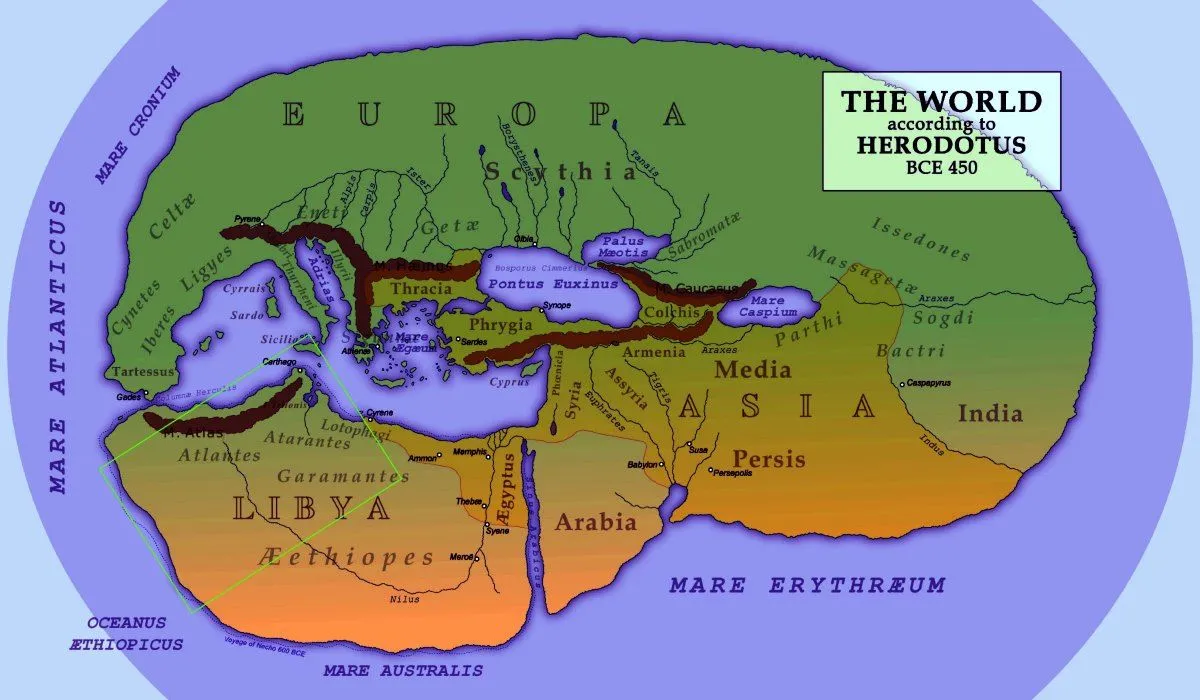
Found this today and it seemed fun to share. There are other versions that don't show the ocean completely encircling the lands of the Earth, like this one for example, but seeing maps like the one shown here where the ocean encircles all the land really put me in a place where I can imagine telling a story about a serpent that lives in the ocean and is so large that it also encircles all the lands of the world.
See https://en.wikipedia.org/wiki/Songs_for_the_PhilologistsA later (2023) edition is available here:...
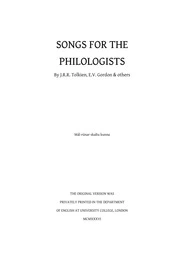
From TolkienBooks.net:
Songs for the Philologists is perhaps the rarest and most difficult to find Tolkien-related publication (although Sir Orfeo could also state a claim). It began life as a set of duplicated typescripts prepared by E.V. Gordon in 1922-1926 for the amusement of English students at Leeds University. These typescripts included verses by Gordon and Tolkien, as well as other traditional songs in Old and Modern English and a variety of other languages.
In 1935 or 1936 Dr. A.H. Smith of University College London, formerly a student at Leeds, gave a copy of one of the typescripts to a group of students to print at their private press. The group included, amongst others, G.T. Ilotson, B. Pattison and H. Winifred Husbands. The booklet was printed in hand-set type as an exercise on a reconstructed wooden hand-press.
Dr. Smith later realised that he had not asked for permission from Tolkien or Gordon, so the completed booklets were not distributed. University College was bombed during the Second World War and the press, and most of the stock of printed items, were lost in the ensuing fire. Evidently some copies of Songs for the Philologists survived - those retained by Smith and the students who printed them. The number that survived the fire is unknown, but is undoubtedly very small - according to one report "more than thirteen".
Presently working through 2 books:
- The Silmarillion
- Le Morte D'Arthur volume II
The Silm is a reread, and I'm in the Flight of the Noldor section early on so stuff is about to get real in Alqualonde. Arthur, though, is a first for me, and it's been a fun ride so far. It's really easy to imagine it as a Monty Python sketch in a lot of parts, just with how over-the-top it leans into the pomp and chivalry of being a Knight of the Round Table.
And here I thought I included the image of the map itself... oops! Here it is

Early Human Migrations
I found this a little while ago and bookmarked it because it's a goldmine of really cool info about the earliest movements of people. It's a map from Wikipedia on Early Human Migrations, and the whole article is great. I'll paste an example below, but really, it's worth a read.
>Populations of Homo sapiens migrated to the Levant and to Europe[dubious – discuss] between 130,000 and 115,000 years ago, and possibly in earlier waves as early as 185,000 years ago.
>A fragment of a jawbone with eight teeth found at Misliya Cave has been dated to around 185,000 years ago. Layers dating from between 250,000 and 140,000 years ago in the same cave contained tools of the Levallois type which could put the date of the first migration even earlier if the tools can be associated with the modern human jawbone finds.
Native English here. Have some passing familiarity with Spanish from back in school. With a recent dive into ancient cultures and mythologies, now I'm beginning to learn Old English so I can one day hopefully read and understand Beowulf in the way in which it was originally written. I'd also like to learn Old Norse for a similar reason and dive through the eddas and sagas. Hebrew, Greek, and Latin are all on my target list, too.
~40000-year-old Löwenmensch figurine
The Löwenmensch figurine is the oldest confirmed statue to exist, dating to around 40k years ago and was found in an excavation in Germany.
There are some other artifacts that have been identified from around the same time period called Venus statues. From what I've read recently, it seems like they are pretty widespread throughout various different groups of ancient peoples, but the one featured in the link above was also found in Germany in a more recent excavation that the one that discovered the Lion Man statue.
The Lay of Aotrou and Itroun
This is a poem that Tolkien wrote about a noble couple that wanted to start a family, and the corrigan that meddled with their dreams.
Map of the Kingdoms of Albion (Arthurian)
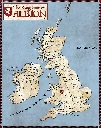

Much like the Camelot map that I just posted, this is another that I found and printed a copy of to keep nearby while reading some Malory.
Map of Camelot (Arthurian)

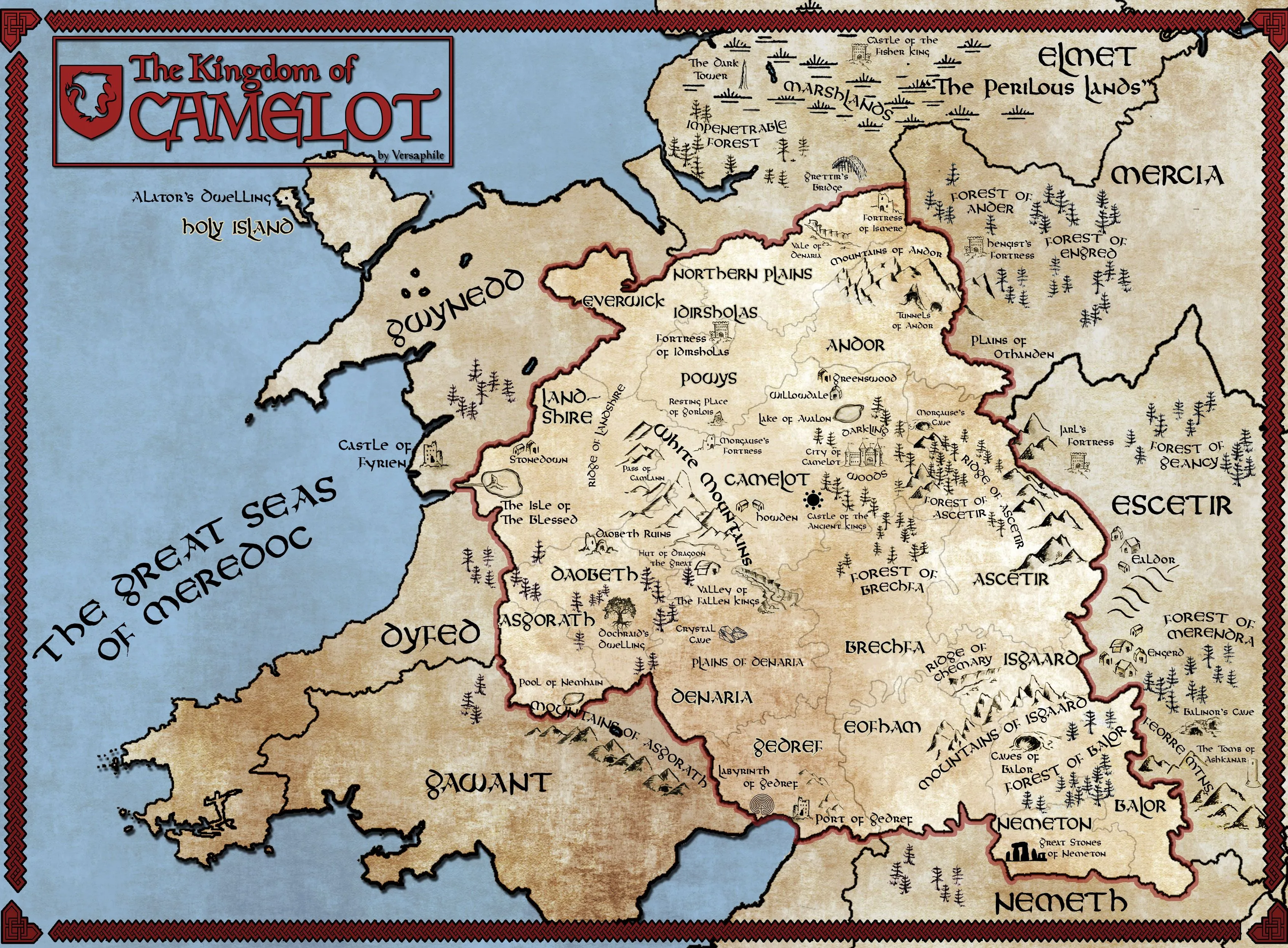
I'm reading Le Morte D'Arthur right now and went looking for some maps to help put things in context. Here's the map of Camelot that I ended up printing off a copy of to keep handy.

